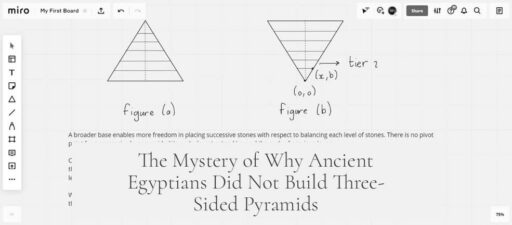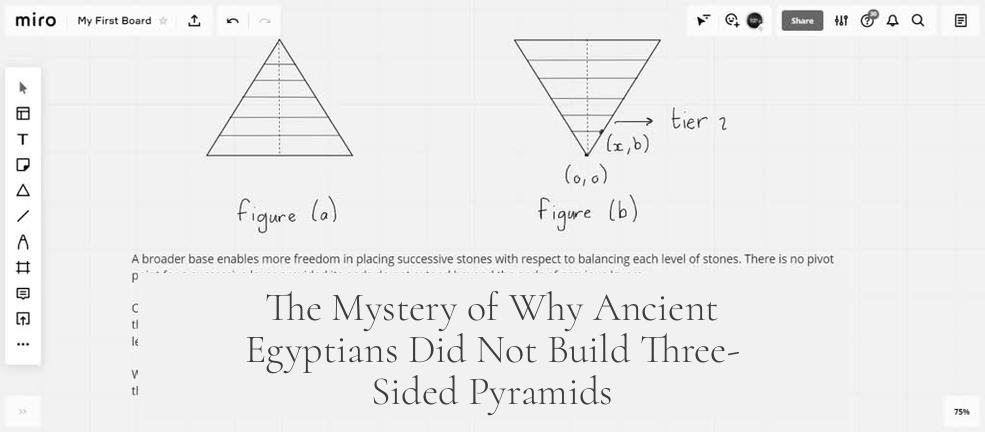The ancient Egyptians did not build three-sided pyramids largely because of cultural, architectural, and practical reasons tied to their worldview and construction methods. The pyramids, especially the Great Pyramid of Giza, typically have four sides aligned closely with the four cardinal points: north, south, east, and west. This alignment was deliberate and held significant cultural and religious meaning.
The ancient Egyptians’ preference for four sides reflects a broader human cognitive pattern favoring the four cardinal directions in spatial orientation. Many cultures, not only Egyptian, structure their environments using four main directions, symbolizing balance and completeness. This cultural and linguistic affinity influenced the shape of monumental structures, including pyramids, which served as tombs for pharaohs and symbolic gateways to the afterlife.
Another critical factor was the architectural and engineering practices used during pyramid construction. A popular theory posits that the Egyptians built pyramids using spiraling ramps ascending the pyramid’s sides. This method works efficiently with four-sided pyramids because the ramps need to make 90-degree turns at each corner. Constructing a three-sided pyramidal structure would involve 120-degree turns in the ramp design. These wider turns present significant logistical challenges, making construction more complex and less stable.
Since the pyramids were massive projects requiring precise engineering, using a method that favored right angles simplified both planning and execution. The stable base and structural integrity of a four-sided pyramid also supported the immense weight of the stone blocks, which might have been more difficult to ensure with three-sided designs.
It is also important to mention the challenge historians face when answering why something did not happen in ancient history. Proving counterfactuals is difficult because historical evidence mostly records actual events, not alternatives explored or rejected. Ancient records rarely explain why certain architectural choices were made or not made, so much of this understanding comes from analyzing surviving structures and their cultural context.
| Reason | Explanation |
|---|---|
| Cultural Alignment | Four sides correspond to the four cardinal directions, which held symbolic and religious importance. |
| Cognitive and Linguistic Factors | Humans and cultures often use four directions to organize space; four-sided forms feel natural and balanced. |
| Construction Techniques | Spiraling ramps suited 90-degree turns along four sides but are impractical for 120-degree turns on three sides. |
| Structural Stability | Four-sided pyramids provide a symmetrical, stable base for immense stone structures. |
| Historical Evidence Limitations | Lack of records on why alternatives like three-sided pyramids were rejected limits definitive conclusions. |
The Great Pyramid itself is often described as four-sided. Still, aerial imaging reveals eight very slight faces, a subtle architectural feature, showing their precision and attention to detail. Yet, none of these variations suggest an inclination toward fewer than four sides. This consistency reinforces the idea of deliberate design centered on four sides.
In summary, the shape of the pyramids reflects a convergence of symbolic meaning, practical building strategies, and cultural norms. The four-sided pyramid shape aligned with cardinal directions, symbolized cosmic order, and was optimized for the techniques available to ancient builders. Three-sided pyramids would have clashed with these principles and complicated the construction process.
- Four sides correspond to Egypt’s emphasis on cardinal directions and cultural symbolism.
- Human spatial reasoning often structures space in four directions; pyramids mirrored this.
- Spiraling ramp construction techniques favored 90-degree turns of four-sided pyramids over 120-degree turns of three-sided ones.
- Four sides provided structural stability for massive stone construction.
- Historical records do not explain all design decisions, so some reasoning remains based on inferred evidence.




